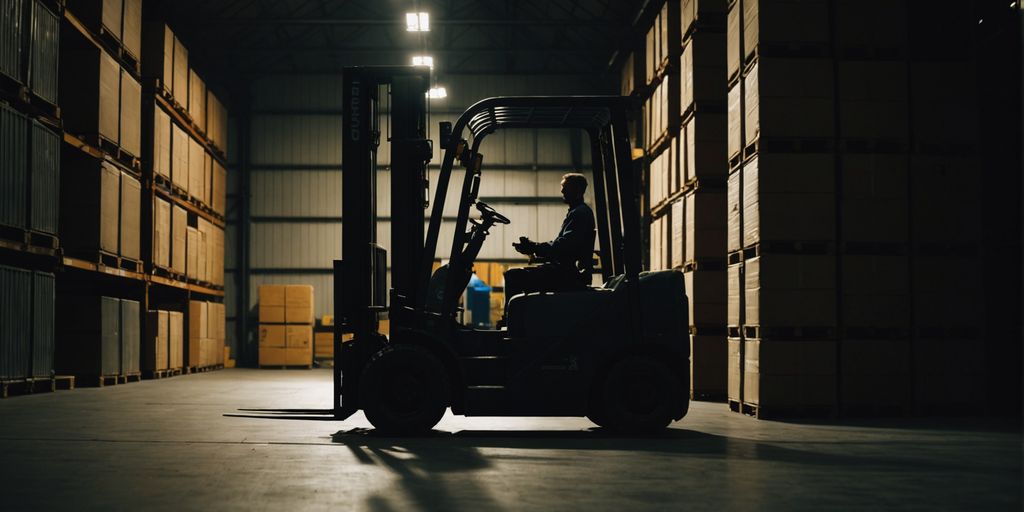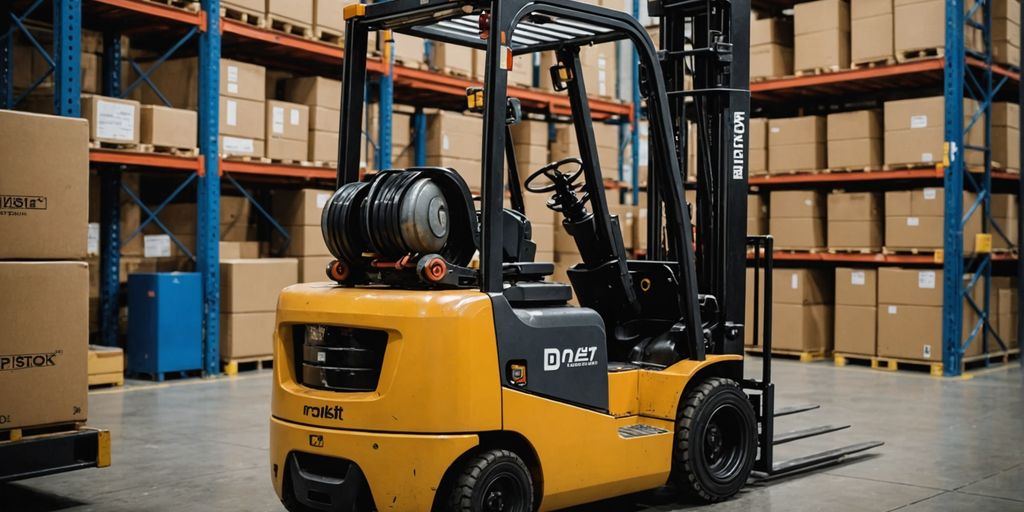Cobots: revolucionando el almacén moderno — overview
Introducción a los Cobots
Los cobots, o robots colaborativos, están transformando las operaciones de almacén al trabajar sin problemas junto con empleados humanos. A diferencia de los robots tradicionales, que a menudo se limitan a tareas y zonas específicas, los cobots están diseñados para compartir el mismo espacio de trabajo que los humanos. Esto permite una mayor flexibilidad, mayor seguridad y mayor eficiencia. Estos robots están equipados con sensores y sistemas impulsados por IA, lo que les permite detectar y adaptarse a su entorno, garantizando una colaboración segura y eficaz.
En los almacenes, los cobots se utilizan para tareas como recoger, embalar, paletizar y transportar artículos. Su capacidad para adaptarse a nuevas tareas y entornos los convierte en una opción ideal para entornos logísticos dinámicos y de alta demanda.
15 tipos de robots utilizados en el almacenamiento
-
Robots Móviles Autónomos (RMA)

Los AMR utilizan sensores, cámaras e inteligencia artificial para navegar por su entorno de forma autónoma. Estos robots pueden moverse libremente por el almacén, transportando mercancías entre varias áreas, optimizando la cadena de suministro y reduciendo la necesidad de intervención humana en tareas repetitivas.
- Vehículos de guiado automático (AGV): los AGV se diferencian de los AMR en que siguen rutas predefinidas, a menudo utilizando tiras magnéticas o sensores incrustados en el suelo. Estos robots son ideales para tareas repetitivas como mover materiales a largas distancias entre estaciones.
-
Brazos Robóticos Articulados

Estos robots imitan la función de un brazo humano y se utilizan para una variedad de tareas como recoger, colocar, soldar y empaquetar. Su alta precisión los hace invaluables para manipular productos delicados o pesados con velocidad y precisión.
- Cobots paletizadores: los cobots paletizadores se especializan en apilar productos en paletas, garantizando que estén listos para el almacenamiento o el envío. Estos robots son muy eficientes a la hora de organizar productos, minimizar el trabajo humano y reducir las tasas de error.
- Robots de recolección colaborativos: los cobots de recolección trabajan codo con codo con trabajadores humanos para recoger artículos de los estantes. A menudo están integrados con sistemas avanzados de IA que les ayudan a aprender y adaptarse a las necesidades específicas de un almacén.
- Sistemas Goods-to-Person (GTP): los robots GTP llevan los productos directamente a los trabajadores humanos, lo que reduce el tiempo que los empleados pasan caminando por los almacenes.
- Robots de herramientas de extremo de brazo (EOAT): los dispositivos EOAT se conectan al extremo de un brazo robótico, lo que permite al robot realizar tareas específicas como soldar, cortar , o recogiendo.
- Sistemas de transporte: los robots de transporte mueven contenedores y bandejas en almacenes de almacenamiento de alta densidad, lo que mejora la utilización del espacio y garantiza un almacenamiento eficiente.
- Robots de recogida y colocación: los robots de recogida y colocación mueven rápidamente productos de un lugar a otro, a menudo en líneas de montaje y embalaje.
-
Robots de embalaje
 Los robots de embalaje automatizan el proceso de colocación de mercancías en contenedores, optimizando la línea de embalaje y reduciendo el error humano.
Los robots de embalaje automatizan el proceso de colocación de mercancías en contenedores, optimizando la línea de embalaje y reduciendo el error humano. - Robots drones: los drones se utilizan cada vez más en los almacenes para realizar recuentos de inventario y escanear rápidamente códigos de barras o etiquetas RFID.
-
AGV para carretillas elevadoras
 Estas carretillas elevadoras automatizadas pueden transportar grandes cargas de forma autónoma, lo que reduce la necesidad de carretillas elevadoras operadas por humanos.
Estas carretillas elevadoras automatizadas pueden transportar grandes cargas de forma autónoma, lo que reduce la necesidad de carretillas elevadoras operadas por humanos. - Robots despaletizadores: Los robots despaletizadores son responsables de retirar los artículos de las paletas, lo que garantiza un funcionamiento fluido en los centros de distribución.
- Robots de clasificación: los robots de clasificación organizan los artículos según el tamaño, el peso o el destino, algo crucial en los almacenes de comercio electrónico para agilizar el procesamiento de pedidos.
- Robots de conteo de inventario: estos robots cuentan el inventario de forma autónoma mediante sistemas RFID o basados en cámaras, lo que proporciona datos de stock precisos en tiempo real.
Conclusión: el futuro de los cobots y la robótica de almacén
A medida que la industria de la logística siga evolucionando, el papel de los robots en los almacenes no hará más que crecer. Los cobots, con su capacidad de trabajar junto a trabajadores humanos, están liderando la transformación de las operaciones de almacén. Desde mejorar la eficiencia hasta reducir el error humano, los robots se están convirtiendo rápidamente en herramientas indispensables en los almacenes modernos. Los 15 tipos de robots destacados anteriormente demuestran el enorme potencial de la tecnología robótica para crear entornos de almacén más ágiles, productivos y seguros.




Deja un comentario
Este sitio está protegido por hCaptcha y se aplican la Política de privacidad de hCaptcha y los Términos del servicio.